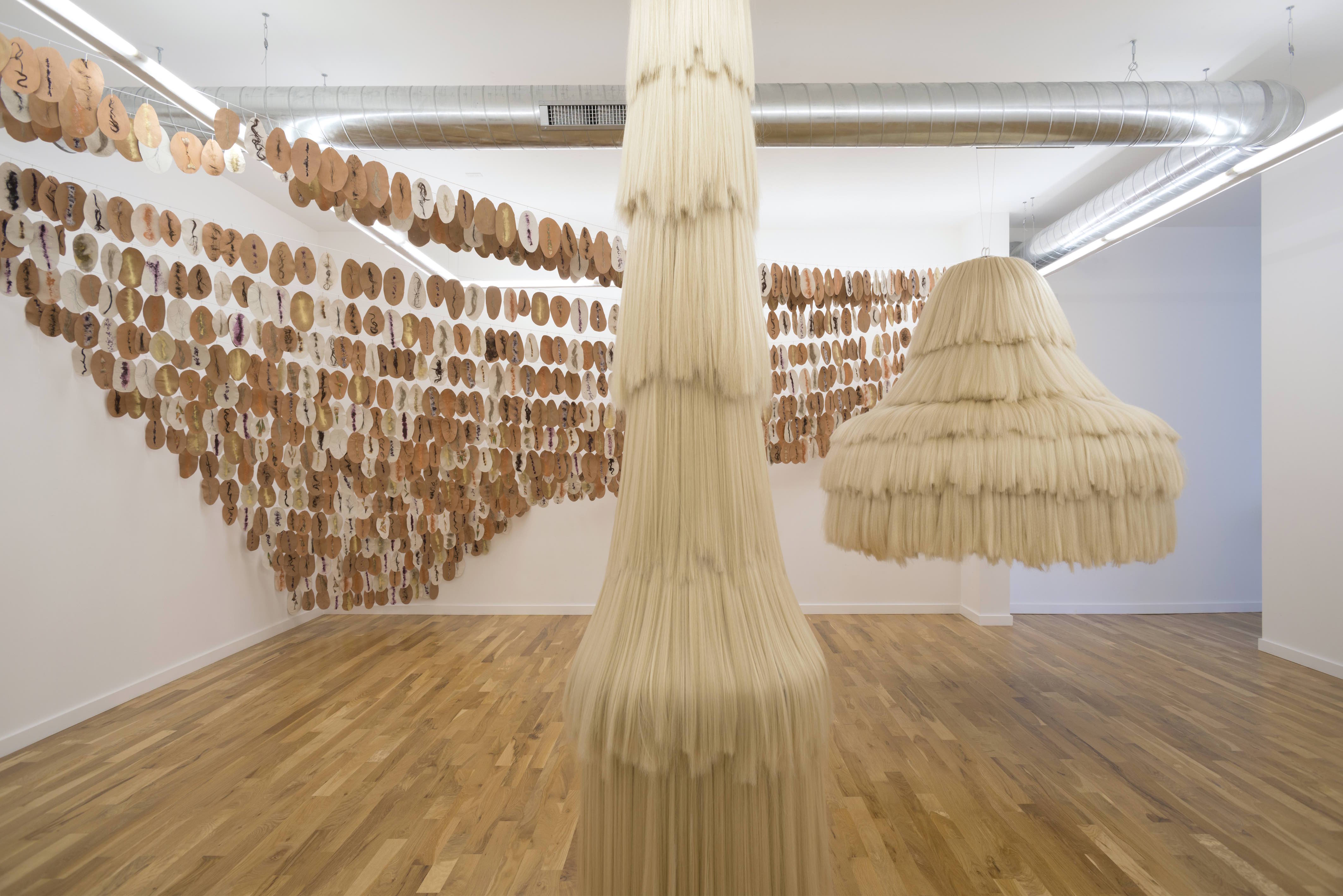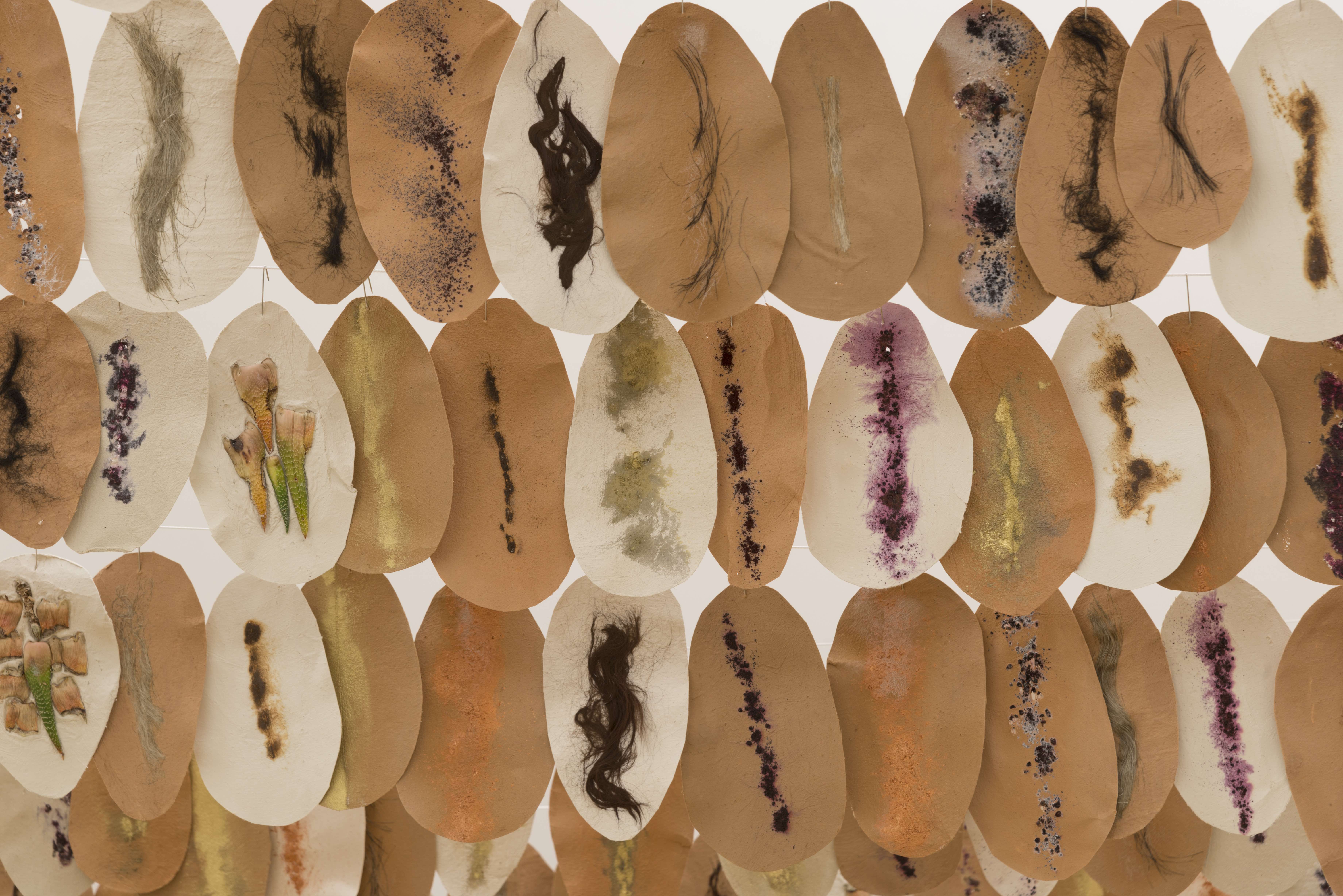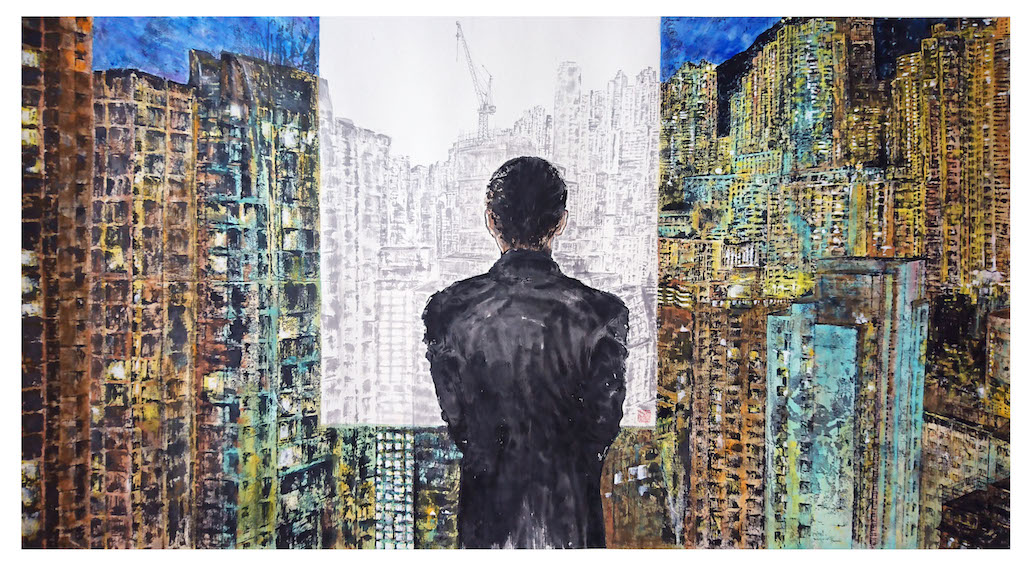
At just four-pieces, it is a modest display of objects.
Two of the pieces of “Reindigenizing the Self,” Tanya Aguiñiga’s second solo exhibition at Volume Gallery, are large sculptures made of synthetic hair that hang from the ceiling. This work is called “Palapa,” the word for the hut-like structures you can see on holiday beach destinations and luxury resorts. One of Aguiñiga’s palapas is wide and short; the other is long and narrow.
Palapas are usually open, with a roof made of dried palm leaves — similar to a hut — and they serve as a refuge from the tropical heat. Their image is used by resorts to reinforce the feeling tourists have that they are escaping their urban landscapes. By placing her”Palapa” within a gallery space, Aguiñiga draws attention to the fact that underlying this gimmick is the appropriation of Mayan culture to promote tourism.
Growing up in Tijuana, Mexico, Aguiñiga spent the first 14 years of her life crossing the border to attend school in the United States; every day, she crossed the border again to return home. Aguiñiga finally moved to San Diego, California, to complete her bachelor’s degree from San Diego University. After that, she went on to pursue furniture design at Rhode Island School of Design (RISD). The initial 14 years she spent going back and forth across the border is reflected a great deal in her current work at Volume, as she uses her artmaking to come to terms with her identity — part Mexican, part American, and part border artist.

“An overwhelming sense of grief and impotence overcomes my soul as I grasp to understand my cultural heritage […],” Aguiñiga tells Volume Gallery in their press release. “My sense of self is riddled with dichotomous punctures.”
In a corner, laid out on a pedestal, is a piece titled “Identity Trap,” a series of pigtails made from Aguiñiga’s own hair, as well as that from her sister and daughter. The other large installation in the room is titled “Nopal.” In this piece, the artist has collected hair (including horse, alpaca, and human) and other material like copper, iron, and succulents. These materials, pressed onto flattened surfaces made of terracotta and abaca pulo, a fiber made from banana leaf pulp, and then mixed with porcelain, resemble leaves or nopals, Spanish for cacti leaves.
According to Sam Vinz, co-founder of Volume Gallery, Aguiñiga’s work has developed and taken a new direction in the last few years. The 2014 group show, “In/Situ,” marked the artist’s first time showing at Volume. It included functional objects and artistic sculptures made using textile and woven fibers.
Her second show a year later, “Mothering the Form,” was in dialogue with experiences of becoming a mother and introspections of her bilingual identity, a theme that continues into the current exhibit.

All Aguiñiga’s objects and designed objects, both past and present, play with the idea of being taken out of their original context and appropriated for a gallery setting. The terracotta and fiber pots from her second show, for instance, were placed on a shelf resembling a setup in someone’s kitchen. At the same time, they resembled a display of “artistic objects” at a collector’s home. Aguiñiga plays with this idea of appropriations in her current show as well, as with the “Palapa” pieces.
Despite making references to all these larger themes through her various material choices, a sense of frustration looms; it may feel the artist stops short of fully completing her thought so that viewers can fully understand her themes. In an attempt to clarify, some effort has been made by the gallery to place some of the different “Nopals” in frames, which hang in the adjacent room. Volume offers a binder of interviews, reviews, a price list, and a press release, as well.
Yet the mundane materials makes it difficult to feel a genuine connection with Aguiñiga’s work right away. Her designs echo her identity crisis, and the materials she uses recollect the complicated nature of her heritage and geographical identity. All of this context, missing in the curation of the show, is key to understanding her work. It’s a shame, because Aguiñiga is attempting a heightened awareness of her heritage by returning to her roots — not novel, undoubtedly, but crucial for someone trying to find their place in the world.
“Reindigenizing the Self” is on view at Volume Gallery, 1709 W. Chicago Ave., 2 Fl., through December 31, 2017.







